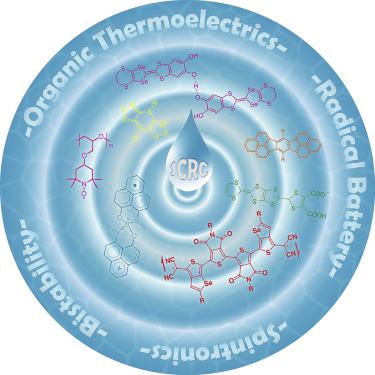Chem ( IF 19.1 ) Pub Date : 2020-10-27 , DOI: 10.1016/j.chempr.2020.10.001 Dafei Yuan , Wuyue Liu , Xiaozhang Zhu

|
Organic conducting materials have garnered considerable research attention in material sciences and have shown immense potential in the development of advanced electronic devices. External chemical doping to enable charge-transfer between two different components is regarded as the general way to fabricate organic conductors. However, chemical doping inevitably leads to several challenging issues such as low doping efficiency, doping-induced changes in the microstructure, and poor stability, which limits their application in organic electronics. Developing single-component organic conductors provides an interesting avenue to address those issues and to realize novel applications. As organic materials generally exhibit large band gap and small bandwidth, obtaining a single-component organic conductor is still a critical challenge. Organic radicals can achieve extremely low band gap by chemical modulations, and spin-spin interactions among the radicals can enhance the molecular orbital overlap, which increases the bandwidth and greatly facilitates carrier transport. Consequently, this minireview summarizes the recent progress in the design of single-component radical conductors and their promising applications in organic electronics.
中文翻译:

单组分自由基导体的设计与应用
有机导电材料已在材料科学领域引起了相当大的研究关注,并在先进电子设备的开发中显示出巨大的潜力。使两种不同组分之间能够进行电荷转移的外部化学掺杂被认为是制造有机导体的一般方法。然而,化学掺杂不可避免地导致一些挑战性的问题,例如掺杂效率低,掺杂引起的微观结构变化以及稳定性差,这限制了它们在有机电子学中的应用。开发单组分有机导体提供了一个有趣的途径来解决这些问题并实现新颖的应用。由于有机材料通常具有较大的带隙和较小的带宽,因此获得单组分有机导体仍然是关键挑战。有机基团可以通过化学调制实现极低的带隙,并且基团之间的自旋-自旋相互作用可以增强分子轨道的重叠,从而增加带宽并极大地促进载流子的传输。因此,本小型综述总结了单组分自由基导体设计的最新进展及其在有机电子领域的有希望的应用。









































 京公网安备 11010802027423号
京公网安备 11010802027423号